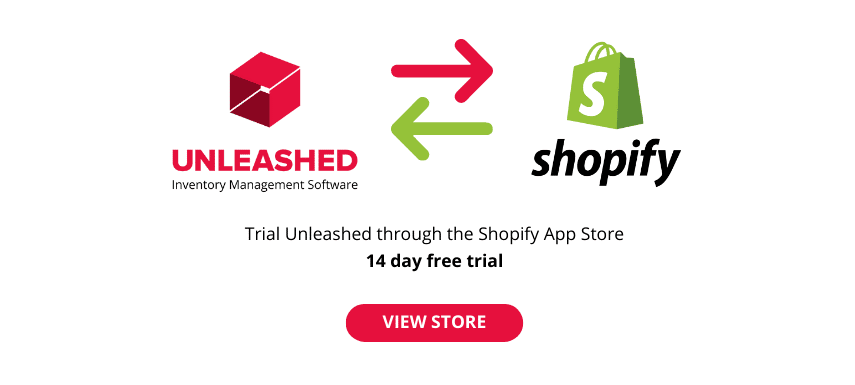
The internet is awash with buzz about social commerce. But it’s one thing to talk about what social commerce is or how it works, and another thing to see it in action – and get inspired about how you can include it in your multichannel eCommerce strategy.
In this article we showcase seven examples of social commerce success from across various apps. While these brands are all in the beauty and lifestyle sectors – which have taken to social commerce like ducks to water – the lessons they’ve learned can be applied to almost any industry.
What is social commerce, and why is it so important for businesses?
Social commerce is almost exactly what it says on the tin – commerce done through social media.
Through a variety of social commerce platforms, brands are able to sell products to their social media followers without those followers generally having to leave the app. This experience can be delivered in a few ways, such as integrated shops, product catalogues, in-video product tagging, augmented reality experiences, and more.
Already you can start to see the power here.
There are literally billions of people around the world on social media. If your brand can sell products directly to them in a place where you can also talk to them, entertain them, inspire them, and encourage them to share and spread the word, you’re creating a seamless experience that is far more engaging than traditional sales funnels.
It's no surprise, then, that social commerce is on the rise. In fact, a whopping 87% of executives agree social commerce is becoming an increasing part of their marketing-driven revenue, according to Sprout Social.
- Want to learn more? Read What Is Social Commerce? [+ The Pros, Cons & Best Platforms]
 With the rise of social commerce, companies are placing more emphasis on this channel as a way to drive revenue
With the rise of social commerce, companies are placing more emphasis on this channel as a way to drive revenue7 successful social commerce examples
Here we give you seven examples of companies that have experienced success with social commerce, to give you some ideas – and hopefully inspiration – for how this channel can be used.
1. Zimba
Who? Zimba, a manufacturer of teeth whitening products
Where? Facebook and Instagram
As a lesser-known brand in the teeth whitening marketplace, Zimba was always going to be climbing an uphill battle against major competitors. However, it had a few things going for it that made its success possible: it sold directly to consumers; it had a natural, reduced-sensitivity product; and it cost less than other brands.
Zimba had profiles on Facebook and Instagram, with product catalogues recently updated, so switching on the Shop’s functionality across both platforms was relatively easy. This has allowed the company’s marketing team to fully integrate social and eCommerce activities, including:
- Enabling customers to pay online for products directly in-app
- Driving organic traffic through posts and stories
- Reaching paid traffic through in-app advertising
- Supporting customers directly through in-app direct messaging
The results? According to Zimba’s Facebook case study, users shopping through Shops had a 6.7% greater average order value than those shopping through the website.
- See more: Zimba’s Instagram
2. Clinique
Who? Global skincare powerhouse Clinique
Where? Facebook Live
From May 2021 through to July of the same year, Clinique was one of a number of brands that took part in the debut of Facebook’s Live Shopping Fridays, an event hosted to showcase the brand’s latest social commerce feature.
Live shopping allows brands to sell products directly to live stream viewers in-app. While presenters discuss the products or answer people’s questions, product information comes up on-screen that viewers can click on, add to cart, and purchase. Of course, because it’s a live stream, users can also comment to chat with presenters, making it a highly engaging medium.
Clinique also uses the full suite of Instagram shopping features. It has a full store available to app users, as well as a number of Instagram Guides, which offer advice and products together on a curated, scrollable page.
- See more: Clinique’s Instagram
 By using features like live shopping, businesses can provide a more engaging experience to customers
By using features like live shopping, businesses can provide a more engaging experience to customers3. 100% Pure
Who? 100% Pure, a natural skincare and beauty products manufacturer
Where? Pinterest
100% Pure was initially built in a farmhouse in the US state of California and has since grown to sell to millions of people in dozens of countries. It’s a digital-savvy brand, making it no surprise that 100% Pure’s marketing team have made the most of the highly visual platform that is Pinterest.
For 100% Pure, Pinterest is like a digital storefront. Products are meticulously categorised, making it very easy to find what you’re looking for. The company also uses Pinterest to talk about philanthropy, inspiration, product ingredients, tutorials, how its products are made, and more.
By clicking on 100% Pure’s products in Pinterest, users learn more about what’s being displayed and can click through to a purchase page to buy. With Promoted Pins, 100% Pure is also able to advertise its products in other parts of the app, so it can catch the attention of users browsing alternative brands.
- See more: 100% Pure’s Pinterest
4. Nike
Who? Nike: specifically the launch of the Air Jordan III “Tinker”
Where? Snapchat
Back in 2018, Nike became the first brand to sell products directly through Snapchat. To help launch its new Air Jordan III, and to show off Snapchat’s social commerce functionality, the two brands paired up to create a totally unique purchasing experience for the 2018 NBA All-Stars game after-party.
Those who attended the after-party were able to scan exclusive Snap codes, open the app, and purchase the shoes within Snapchat. Even more exciting, the company offered same-day delivery so anyone who bought through Snap received their shoes by 10:30pm that night.
More excitingly, users were already in a Snapchat frame of mind at the time, because during the game itself Nike geofenced the arena so everyone inside was able to access a special 3D augmented reality Snapchat lens about Michael Jordan
Every pair of Air Jordan IIIs sold out in just 23 minutes.
Snapchat’s social commerce functionality has since grown. Snapchat’s now the go-to place for augmented reality e-commerce, allowing brands to create AR filters of their products that users can ‘try on’ virtually in-app, after which they then click on a link to make a purchase.
 Social commerce is facilitated by a range of popular social apps, from Facebook to Tiktok
Social commerce is facilitated by a range of popular social apps, from Facebook to Tiktok5. Itzy Ritzy
Who? Itzy Ritzy, manufacturer of chic baby products
Where? Instagram
Itzy Ritzy is one example of a brand that has clearly understood the power of community, and has leveraged its Instagram presence to build a strong circle of followers integrated with a social commerce experience.
The company’s feed is chock full of giveaways, competitions, live streams and the kind of content you’d normally see straight from your favourite influencers. In fact, influencers also feature, as well as user-generated content. This isn’t just a feed full of typical marketing posts, but an array of inspiration, comedy and lifestyle content that people love to engage with.
This is the perfect social commerce experience, with Itzy Ritzy showing off its use of features such as:
- Tagging its own products in posts to link users straight to its shopping tab
- Allowing users to wish list products to add to their own in-app shopping lists
- Encouraging users to share content to their own feeds, stories and DMs
- Creating branded hashtags to make its content plus users’ content discoverable in one place
See more: Itzy Ritzy’s Instagram
6. Kylie Cosmetics
Who? Kylie Cosmetics, a vegan beauty brand owned by Kylie Jenner
Where? TikTok
Back when TikTok first launched its social commerce functionality in partnership with Spotify, Kylie Cosmetics was one of the first brands to get involved. This allowed the celebrity influencer to not only create exciting content and share ideas, but tag products directly in her videos which would then link to a shopping page on her TikTok profile.
When it launched, this functionality was unique to Shopify users, but it has since opened up to a variety of eCommerce platforms.
Like Kylie Cosmetics, brands can now offer a similar social commerce experience whether their users are on Facebook, Instagram or TikTok – creating content, inspiring users, tagging products and linking directly to an in-app store.
- See more: Kylie Cosmetics’ TikTok
7. MADE.COM
Who? MADE.COM, a small-batch production lifestyle manufacturer
Where? Facebook AR
As a creator of furniture and other homeware products, MADE.COM was struck hard by the Covid-19 pandemic. After all, no one was going out to furniture stores anymore. But, already a digitally savvy company, Made knew it had to quickly pivot to new technologies to help sell to consumers over the internet.
With help from a company called North Kingdom, Made crafted an augmented reality experience within Facebook Spark AR. This enabled them to create video ads that linked through to an AR experience, where users could preview what items would look like within their own home. In seconds, Facebook app users could try out different styles and colours and see exactly what they would look like in their actual spaces.
Of course, users could then click through to purchase what they liked. According to Facebook’s case study on MADE.COM, the brand saw a 2.5x conversation rate and 3x add-to-cart rate when comparing their AR ads to regular video ads.
 Social platforms provide an engaging interface for your online sales, but integrated systems including CRM and inventory management are vital to streamline the sales process
Social platforms provide an engaging interface for your online sales, but integrated systems including CRM and inventory management are vital to streamline the sales processHow inventory management helps you leverage social commerce
An important thing to remember is that getting set up on social commerce isn’t just about the social platform. You need your back end sorted as well, or else your brand new sales could cause more chaos than delight.
One of the most common problems with new omnichannel sellers is a lack of integration between platforms. In other words, the social commerce platform, eCommerce platform, brick-and-mortar stores and inventory management system are all siloed, unable to talk to each other. This can lead to false sales and stockouts, where you’re selling products that no longer exist, or losing track of sales that should have gone out already.
Modern inventory management software is the solution here. It can help you track inventory in real time, sort and prioritise orders, integrate different platforms (including non-sales platforms like CRM or accounting), forecast future sales, and reorder new stock quickly when levels run low.

